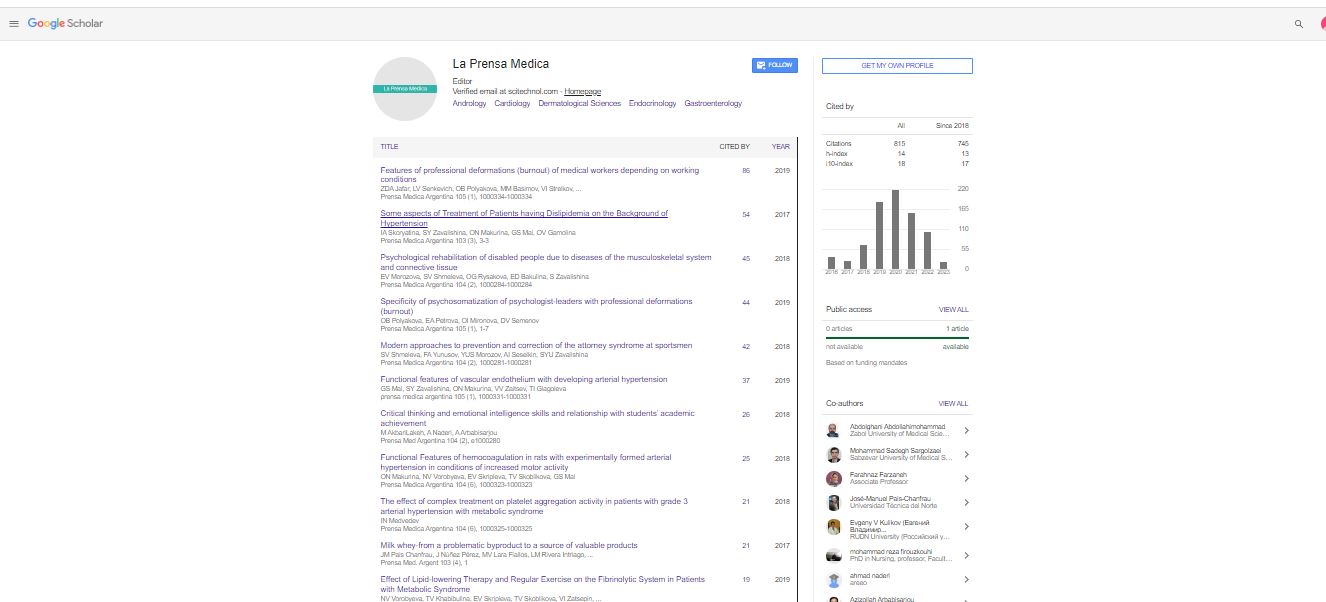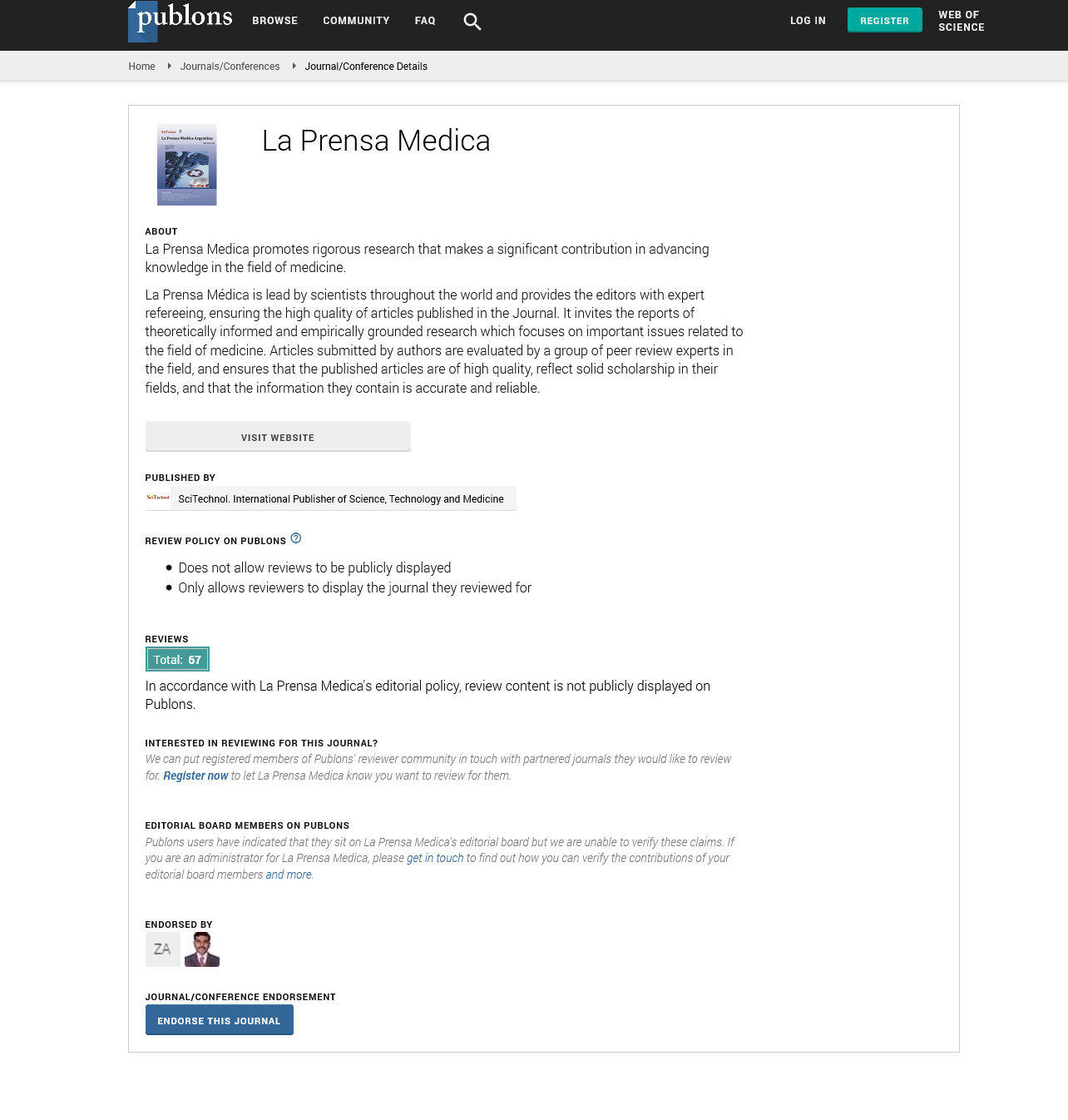Commentary, La Prensa Medica Vol: 109 Issue: 4
The Hidden Hazard of Fungi and Algae on Human Health
Sandre Garrouste*
1Department of Infectious and Tropical Diseases, University Hospital, Clermont- Ferrand, France
*Corresponding Author: Sandre Garrouste,
Department of Infectious and Tropical Diseases, University
Hospital, Clermont-Ferrand, France
E-mail: garrouste@sandremontferrand.fr
Received date: 30 October, 2023, Manuscript No. LPMA-23-111734;
Editor assigned date: 01 November, 2023, PreQC No. LPMA-23-111734 (PQ);
Reviewed date: 16 November, 2023, QC No. LPMA-23-111734;
Revised date: 23 November, 2023, Manuscript No. LPMA-23-111734 (R);
Published date: 30 November 2023, DOI: 10.4172/2324-8955.1000679
Citation: Garrouste S (2023) The Hidden Hazard of Fungi and Algae on Human Health. La Prensa Medica 109:4.
Abstract
Infectious diseases have been a constant companion throughout human history, shaping societies and cultures. While bacteria and viruses often take the spotlight when discussing infectious agents, fungi and algae can also pose significant threats to human health. Among these microbial adversaries, some fungi and algae have gained notoriety for causing deadly infections that challenge medical science and public health efforts.
Description
Infectious diseases have been a constant companion throughout human history, shaping societies and cultures. While bacteria and viruses often take the spotlight when discussing infectious agents, fungi and algae can also pose significant threats to human health. Among these microbial adversaries, some fungi and algae have gained notoriety for causing deadly infections that challenge medical science and public health efforts. This article delves into the world of these often-overlooked pathogens and explores the deadliest infections caused by fungi and algae.
A different kind of foe
Fungi and algae belong to distinct branches of the microbial tree of life. Fungi are complex eukaryotic organisms that can take on various forms, including yeasts, moulds, and mushrooms. Algae, on the other hand, are photosynthetic organisms that range from microscopic unicellular species to larger, multicellular seaweeds. While both groups play essential roles in ecosystems and have beneficial applications, certain species within them can become formidable pathogens in humans.
The challenge of fungal infections
Fungal infections, also known as mycoses, have been a cause of human illness for centuries. Some fungal species have co-evolved with humans and are part of our normal microbiota, while others can cause opportunistic infections, taking advantage of weakened immune systems. However, a few fungal pathogens stand out due to their ability to cause severe and often deadly infections.
Candida auris: This emerging fungal pathogen has gained attention for its multidrug resistance and ability to cause invasive infections in hospitalized patients. Candida auris can spread easily within healthcare facilities and has been associated with high mortality rates. Its resistance to common antifungal drugs complicates treatment, and the emergence of this pathogen underscores the need for improved infection control measures.
Cryptococcus neoformans: Found in soil and bird droppings, this fungus can lead to severe lung infections, particularly in individuals with compromised immune systems. Cryptococcus neoformans can also cause infections in the brain and spinal cord, resulting in lifethreatening cryptococcal meningitis.
Aspergillus fumigatus: Aspergillus species are common in the environment, and most people inhale their spores without harm. However, individuals with weakened immune systems or underlying lung conditions are susceptible to invasive aspergillosis. This infection can spread beyond the lungs, affecting other organs and leading to high mortality rates.
The perils of algal toxins
While algae are often associated with aquatic ecosystems, certain species can produce toxins that pose risks to human health. Harmful Algal Blooms (HABs) can contaminate water sources and release toxins into the environment. These toxins, known as Harmful Algal Bloom Toxins (HABTs), can lead to a range of health issues and, in severe cases, fatal outcomes.
Microcystins: Produced by cyanobacteria, commonly referred to as blue-green algae, microcystins are potent toxins that can accumulate in bodies of water. Ingesting water contaminated with microcystins can lead to hepatotoxicity, causing liver damage and potentially leading to liver failure. These toxins pose a particular risk to communities that rely on contaminated water sources for drinking and recreation.
Pseudo-nitzschia species: These algae produce domoic acid, a neurotoxin that accumulates in shellfish during HABs. Consumption of contaminated shellfish can lead to amnesic shellfish poisoning, causing gastrointestinal and neurological symptoms. In severe cases, the toxin can lead to seizures, memory loss, and even death.
Combating the Threat
The complexity of fungal and algal infections presents unique challenges for diagnosis, treatment, and prevention. Fungi and algae have distinct life cycles and mechanisms of pathogenesis that require tailored approaches. Some measures to combat these infections include:
Improved diagnostics: Rapid and accurate diagnostic tools are essential for identifying fungal and algal infections early. Advances in molecular techniques, such as DNA sequencing, have enhanced our ability to identify specific pathogens and their resistance patterns.
Antifungal and anti-algal agents: Developing effective antifungal and antialgal drugs is crucial. The rise of drug-resistant fungal pathogens emphasizes the need for novel treatments. Targeting specific cellular pathways unique to fungi and algae can provide new avenues for drug development.
Prevention and surveillance: Preventing fungal and algal infections often involves improving infection control measures, especially in healthcare settings. For algal toxins, proactive monitoring of water sources can help mitigate the risk of HABs and toxin exposure.
Public education: Raising awareness about the risks associated with fungal and algal infections is vital. Educating the public about the dangers of consuming contaminated water or shellfish and promoting proper wound care can help reduce the incidence of these infections.
 Spanish
Spanish  Chinese
Chinese  Russian
Russian  German
German  French
French  Japanese
Japanese  Portuguese
Portuguese  Hindi
Hindi 

